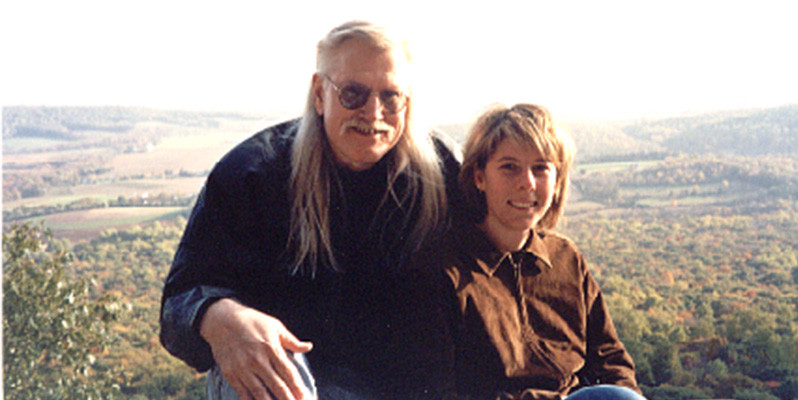 Janet Mulligan Bowen
Janet Mulligan Bowen
If you’re like me, you grew up hearing about and seeing signs for the Kittatinny Ridge and the Appalachian Trail (A.T.) without realizing that that we live and travel regularly within this incredible feature of the North American landscape. We are in awe of the great A.T. thru-hikers like Earl Shaffer and Grandma Gatewood. Yet, for many, the outdoors is experienced in hours, not days. We discover the Kittatinny Ridge and its features through museums, National and State parks, hunters and anglers, and by stopping to follow signs that beckon us on to new paths. We have the numbers on our side, which represent the bulk of visits and the potential to provide significant support to preserve one of the most dynamic land features of the region.
In retrospect, I discovered that I have hiked, fished, and played on various points of the Kittatinny Ridge and the A.T. for most of my life. One of the best ways to enjoy these natural spaces is through National and State Parks. It does not take an ecologist or a thru-hiker to be in awe of the raptor migration watch on Hawk Mountain. A reasonable hike to the lookout, and visitors experience the beauty of the mountains looking for hawks, eagles, and ospreys among “a few of our closest friends.” The park guides and visitor’s center provide engaging programs for people of all ages, and there is even a new trail designed for people with disabilities.
Closer to Harrisburg, my friends and I struggled through rocky trails and climbed a small cliff on Second Mountain overlooking the beauty of the Susquehanna River at the Dauphin Narrows. And most importantly for me, at an impulsive stop on the A.T. at Route 501 in Berks County, I discovered Kimmel Lookout and fell in love while quietly looking out across the valley below.
It is easy for people to find ideas for family-friendly activities, as well as those for the adventurer. The best resource for hikers is the local hiking and trail maintenance clubs such as the Blue Mountain Eagle Climbing Club (BMECC) or the Susquehanna Appalachian Trail Club (SATC). Anyone can help others enjoy the Kittatinny Ridge – like Duncannon “Trail Angel” Mary Parry, who supports hikers with little gifts of food and drinks or even taxis hikers into town for supplies.
While we all may not be sleeping under the stars, it is worth considering opportunities to enjoy and utilize the many activities and spaces available to the public. In 2012, I interned with the A.T. Museum in Pine Grove Furnace Park near Shippensburg and learned how thousands of people have worked diligently to preserve both hiking trails and the natural landscape remembering to “leave no trace” of their hikes. I shared museum visitors’ enjoyment in listening to first-hand accounts from hikers, rangers, and trail maintainers.
We benefit because the Appalachian Trail Conservancy staff, Audubon PA staff, and their partners work tirelessly to raise funds, maintain the natural landscape, and actively participate in government processes for the benefit of all. We may not be professional staff members of these organizations, but there are many ways for us to pay it forward: volunteering occasionally for a Saturday of trail maintaining, donating or becoming a member of a nature or hiking organization, and involving ourselves in advocacy work to protect the natural wonder of the Kittatinny Ridge.
Janet Mulligan Bowen, MA, MLS, who has had a long-time love affair with the A.T., serves as Curator of the Historical Society of Dauphin County.

